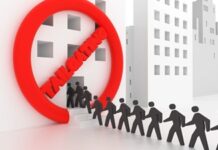
Selecting door locking hardware used to be simple. You’d select from the BHMA list of functions and you’d be able to satisfy the different locking needs of a facility. BHMA functions include Storeroom (where you always need a key to enter), Classroom (where you use a key to lock or unlock the exterior lever handle for extended periods) and Apartment (where the user chooses via a toggle switch whether or not a key is required for entry).
These three functions are also among the ones likely to be needed in the electric locking world as well. In the mechanical locking days, the trickiest part would be providing all the data for the keying system, as that answered the question of providing access to individual rooms or areas.
Now, that is a function more than likely to be provided by the access control system, onboard brain of the lock or even the app on the user’s mobile phone. Thinking about electric locking solutions brings you back to selecting locking functions and setting up keying systems. You want to make your choices based upon the needs of the end user. As a systems integrator, you will also want to try to harmonize the elements to minimize the systems the user needs to train on and maintain.
Let’s address the process in the following three steps of function, category and relationship.
The first step in selecting the correct locking function is remembering that doors are critical elements in a building’s life-safety system and there are very well-defined rules for means of egress. If you are unsure about egress requirements, stop and do not pass go. For an existing building, generally replicating the function of the mechanical locking hardware will work, unless the owner has changed what was on the door at the time of the issuance of the original Certificate of Occupancy. A good rule of thumb is that any door between an occupant and the last exit point of the building must open with a single motion. That means one action to exit. Levers or panic bars on the door and then a button on the wall are expressly forbidden.
Fire codes are in place for doors with fire labels on them (check the edge) and they must have positive latching to match the label. Next you have to choose which category of electric release. The trim and lock body solutions are door mounted and offer the choice of simply being operated by a power supply and whatever intelligence drives that power supply (from a release button at a desk, to an intercom or an access control system) or they can be provided with their own intelligence built into the trim or mounted as part of a set on the door.
Electric strikes can also be released from remote systems, but typically do not have their own standalone intelligence systems. The next consideration would be the lock function and its relationship to the electric release. Most electric release is based upon the Storeroom lock function. That means the door is always locked, and electric release via any of the controllers mentioned earlier allows a single entry. The moment the “brain” stops providing power to the door, the lever is locked on the exterior or ingress side. Remember that the egress side (interior) typically provides free exiting at all times and does not require power to exit.
A key override is typically provided on the ingress (exterior) side. More sophisticated systems will allow you to establish time zones where you may allow free entry, mimicking the Classroom function. Others may let users set the function, mimicking the Apartment function. Understanding the space usage is critical in determining the electric locking system to use.











